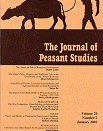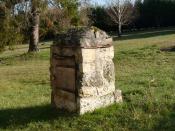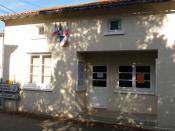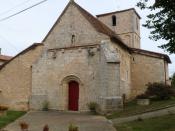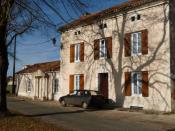Village of Cannibals: What meanings do historians like Peter McPhee and Alain Corbin read into the various forms of peasant protest and violence that they discuss? In his article "Popular Culture, Symbolism and Rural Radicalism in Nineteenth Century France"ÃÂ, Peter McPhee looks at the changing nature of peasant protest and violence of the time. Through a series of examples McPhee highlights changes seen in the French consciousness and the difference between the urban and rural response to protest. McPhee explains that after the time of the Second Republic (1848-1851), France had become highly politicied with strikes, demonstrations and protests common place. McPhee also points out that this politicisation of a the French masses came about with the formation of the democrate -socialiste party, the first mass left-wing party in European history as well as the effects of rural depovulation and falling birth rates which saw a new "modern"ÃÂ form of protest emerge.
This was the first time the peasant and working class had8been involved or concerned in national issues and lead to many cultural changes. One of these was the increased notion of a French nation-state. However despite this new ideal of "Frenchn}ss"ÃÂ, in regional communities traditional festivals and processions remained important in public life and became an outlet for political discussion and displays of protest. Both religious and secular festivals were used for the outlet of political and radical sentiment as can be seen by the examples McPhee gives of Collioure and Vidauban. The scenes of Marianne arriving in town in triumph holding a dagger and tricolour, both national and revolutionary symbols, and of the mock trial and execution of the "dummy"ÃÂ are important examples of protests against the harsh oppressive hand of Paris being dealt with in a more modern and less violent form. An underlying message of McPhee's article is that the newly awoken mass of rural people are somewhat out of touch with the standards of the centralised Parisian beauracracy . "At all hours and everywhere people sing about what is the most obscene and most appalling in political matters. Here everything breathes the most frightening socialism!"ÃÂ McPhee also points out that these new radicals or "rouges"ÃÂ were even prone to using the church as an outlet for their outlawed political gatherings.
The Government could outlaw red carnations, dancing, singing, masquerades and the shout, "Long live the democratic and social Republic"ÃÂ, but hw could it outlaw church services?"ÃÂ One of the main messages of McPhee's article is the attempt of the newly politicised rural masses to express themselves and protest in their own way. They continues to use their own customs and festivals to almost isolate themselves from the Parisian dominated society. "Peasants in southern France fou~d a way of rejoicing in being both radicals and provincials, twin objects of contempt for Parisian administrators"ÃÂ The many examples that McPhee discusses of peasant uprisings show that at the time |he rural minorities were strongly opposed to the regime of Paris and were happy to be regarded as both radical and socialists as well as republicans in a losing struggle to thwart the attempted integration of these sects into a French nation state.
Alain Corbin also discusses the forms of peasant protest and violence in nineteenth century France in his book, " Village of Cannibals:Rage and murder in France 1>70"ÃÂ. As in McPhee's article, Corbin notices a dramatic shift to a more modern display and acceptance of forms of protest in the French consciousness. The public reaction to the torture and execution of a Prussian at Hautefaye in 1870 says a lot for how far France had come in the previous twenty years, and how far it still had to go. The man, Alain de Moneys, was accused of having said "Vive la Republique"ÃÂ and so was tortured for hours and then burnt at the stake under the gaze of "three hundred to eight hundred people"ÃÂ. This group of staunch nationalists who stood firmly behind the Emperor were quickly astounded by the intervention of the Parisian authorities into the matter. The torture and execution became a national scandal with the majority of citizens thinking the act barbaric and something totally out of the ordinary and savage. Certainly not something considered to be acceptable behaviour in 1870.
When the prosecutor asked how long Moneys might have felt himself burning the witness replied: "Not long. Ten of fifteen minutes"ÃÂ. You call that not long!"æIn other words, two contrasting sensibilities met in court in December 1870.
Unlike the group of protests discussed by McPhee, the execution at Hautefaye did not follow the social and political ideals of the time. The people were as if from some other country, although they were themselves Nationalists. "We did it to save France. Our emperor will surely save us"ÃÂ The villagers indeed expected to be rewarded for this act of savagery! The fact of infamy that this tale ga~ners is that it happened a hundred years after its time. There was a gap in thi{ on group of "isolated peasants, whose behviour apparently was unoffected by changed in what the rest of society deemed tolerable"ÃÂ This kind of act was thought to have been extinguished from French society, despite the continued massacres on battle~ields around Europe. Corbin has displayed that despite the awakening of the French consciousness and the developmen| of modern forms of protest and behaviour how some isolated pockets of society can go on unchanged. Corbin displays the shock of the rest of French society of this act that would have "ÃÂpaled into insignificance a century earlier"ÃÂ. The peasants of Hautefaye, however had their reasons. Not only was the killing a way to relieve tension and keep up social cohesion in this time of upheaval it was an act of bravery on behalf of the Emperor.
In their respective discussions, Corbin and McPhee attempt to paint a picture into the changing nature and role of the masses in French society in the nineteenth century. They were increasingly involved in politics, especially left wing parties, and this was seen through the examples of more modern and acceptable forms of protests such as strikes, unionism and demonstrations growing in regularity. There was also a sense of a longing to show independence from the French nation-state in these protests in rural villages through the retention of traditional culture, language and festi~als in association with this newly developed political voice. However this attempt as discussed was not successful as in 1870, when the Hautefaye incident occurred the sentiment of French nationalism and the united outrage at the rural dissidents is clear to see. Both Corbin & McPhee in their discussions of peasant protests in nineteenth century France show the relationships between the working class, religion, republicanism, authority an| politics that were|to underpin the developments of subsequent revolutions and the eventual institution of democratic rule to much of Europe in the twentieth century.
BIBLIOGRAPHY: Corbin, Alain: "The Village of Cannibals:Rage and Murder in France 1870 (Cambridge Mass., 1992) McPhee, Peter: "Popular Culture, Symbolism and Rural Radicalism in Nineteenth-Century France"ÃÂ, Journal of Peasant Studies, 5 (1978)

